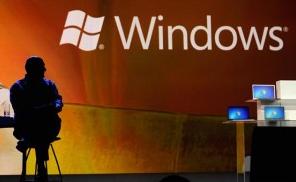
Enterprise IT decision makers are about half as enthusiastic about the new Windows 8 as they were three years ago about the then-just-released Windows 7, an analyst said.
Employees, however, have a higher-than-expected interest in the revamped operating system when it powers a tablet, second only to Apple’s iOS, which runs the iPad.
According to David Johnson of Forrester Research, 24% of the more than 1,200 North American and European IT hardware purchasers the firm interviewed in the third quarter said that while they had no plans in place to migrate to Windows 8, they expect to at some point.
The result was half that of the 49% of similar professionals Forrester surveyed in 2009 just before the launch of Windows 7.
Other answers to poll questions in 2009 and 2012 hammered home the trend: 4% this year said that they plan to migrate in the next 12 months, while 5% confirmed they had plans but wouldn’t begin in the next year, compared to 7% and 10% who said the same three years ago.
The results shouldn’t be surprising: For months, analysts have been predicting a shrug as the enterprise reaction to Windows 8. And Computerworld has found that usage of the new OS seriously lags behind the pre-launch statistics for Windows 7.
Nor are the reasons Johnson cited a shock.
“Most companies are still in the midst of their Windows 7 migrations, or have only finished them,” Johnson said in a Friday interview. “They don’t have the time or the money for another Windows migration.
Johnson elaborated, ticking off seven reasons why enterprise adoption of Windows 8 is at risk. They included the migration fatigue he spoke of, as well as limited appeal of the apps in the Windows Store, confusion among users and IT professionals about the differences between Windows 8 and Windows RT, and the vastly-different user interface (UI) sported by both operating systems.
“IT professionals are not quite sure how their users will accept the UI,” said Johnson today, noting the likely increases in training and support costs for firms that move to the new — and even to long-time Windows users — unfamiliar UI.
“The loss of familiar attributes like the Start button for navigation, or the potential for confusion between apps running on the legacy Windows desktop and those running in the new Windows 8 interface, will cause disorientation and frustration,” Johnson predicted, echoing reviews and widespread consumer comments.
Forrester’s recent survey showed that enterprise interest in Windows 8 is about half that three years ago for Windows 7.
If there’s a silver lining in the Windows 8 cloud, Johnson said, it’s the interest of business workers in the new OS on tablets.
Twenty percent of nearly 10,000 recently-surveyed workers said that they would prefer Windows 8 on their next touch-enabled tablet; 26% picked iOS, while 11% named Android.
Johnson pegged Office as a big reason for that Windows 8 enthusiasm, whether the full suite on Windows 8 touch devices or the scaled-down version, dubbed Office RT, on Windows RT-powered hardware like Microsoft’s own Surface RT tablet.
The enthusiasm for Windows 8 from employees, said Johnson, will push corporate IT departments to set support policies for Windows 8, and accelerate BYOD (bring your own device) demand.
Even so, that’s not a slam dunk. “If Windows 8 is going to be consumerised, the problem is that most companies don’t yet have BYOD policies,” Johnson said.
Enterprise hesitancy, even though it has to have been anticipated by Microsoft, puts its bet on the new OS in jeopardy. When CEO Steve Ballmer has tried to rally developers to Windows 8 and its new app model, he has maintained that the millions of Windows 7 PCs represent a pool of potential customers that developers cannot ignore.
If those Windows 7 machines are not upgraded to Windows 8, Ballmer’s argument fails.
Nor has Windows 8 met the company’s own internal goals, Johnson maintained, echoing others who have said the same this week.
“They’re below expectations,” said Johnson, speaking of initial Windows 8 sales as well as sales of Windows 8 and Windows RT hardware. “Microsoft probably set their goals too high.”
The economic climate is also working against Microsoft, as consumers and businesses alike continue to tighten belts. The uncertainty over the so-called “fiscal cliff” that the U.S. government faces is one reason. But there are others, too.
“Companies have been extending their PC refresh cycles from the former three to five years to as much as six or seven,” said Johnson. “No one is expecting to spend more money, because although PCs are core to business, they’re also overhead. There’s concern [among decision makers] that the OS refresh of Windows 8 should be tied to a hardware refresh, but with the Windows 7 migration just finished or still under way, they’re not going to be anxious to do another [PC] refresh any time soon.”





